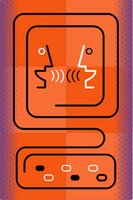
Time to unleash some of my recent musings/ruminations that have been incubating in my cortex.
Regular readers of either of my blogs (
IQ's Corner; the
IQ Brain Clock) should have noted my continued and increasing interest in contemporary research, often from diverse diverse professional sandboxes (e.g., music perception; neuroscience; cognitive psychology; biological psychology; etc.), regarding c
ognitive temporal processing and/or mental/interval time-keeping (my interest in these topics was recently reflected in posting of the the
IQ Brain Clock EWOK).Without getting into detail (space does not allow), some
recent reading I've completed re: the work of Dr. Tallal (author of the
Fast ForWord intervention program;
note - as I've mentioned before, I've not yet reviewed the FF intervention research...I've been focusing exclusively on the substantive theoretical and empirical research re: the cognitive abilities that underlie the foundation for the FF intervention) has suggested, in my little cortex, possible links between her research on "
temporalspectral acoustic speed" (also referred to, by Dr. Tallal, as r
apid auditory processing;
temporalspectral auditory processing speed; and/or
acoustic speed) and the more
general mental/interval time-keeping literature. [Click
here,
here, and
here to view the primary Tallal articles I've been digesting]
Although I've not yet incorporated Dr. Tallal's research (as well as similar work done by others; e.g., Stefanatos et al. 2007
Neuropsychologia article on "
rapid auditory gap detection") into the
IQ Brain Clock EWOK (I will do so when I post the next revision), I have started the incorporation process in my personal knowledge base.
Sometime during this or next week I hope to post (over at the
IQ Brain Clock blog) more of my thoughts regarding the cross-fertilization of Dr. Tallal's
domain-specific (language and reading) "timing" research with the more
domain-general mental/interval time-keeping/temporal processing research. I think they are related and complimentary lines of important research.
However, at this time I would like to toss out one of my thoughts to those interested in the
CHC theory of cognitive abilities. In my 2005 Chapter in the
Flanagan and Harrison Clinical Intellectual Assessment book (aka, the
CIA book) (
click here for on-line version of chapter), I attempted to update the factor structure of the human cognitive speed domains (
Gs and
Gt). I
presented a preliminary structural model for consideration.
My recent musings have led me to speculate the the rapid auditory processing speed Dr. Tallal and others have been investigating might represent a
speed/fluency factor in the CHC domain of Ga. As articulated in
Carroll's seminal treatise, abilities within CHC ability domains can often be classified as either
level or
speed/rate/fluency abilities. For example, as noted in the proposed speed hierarchy in my 2005 chapter
, speed of reasoning (RE) is a possible speed/fluency ability in the broad domain of
fluid reasoning (Gf). Similarly,
perceptual speed (P) is a rate/fluency aspect of
visual-spatial processing (Gv). Another example would be
number facility (N) as the rate/fluency aspect of
quantitative knowledge (Gq).
My current thoughts, which are very preliminary, is that the acoustic/rapid auditory processing speed abilities investigated by Tallal et al. might be conceptualized as a
rate/fluency ability in the CHC domain of auditory processing (Ga).
What do people think?
More thoughts will follow at the
IQ Brain Clock.
Technorati Tags:
psychology,
educational psychology,
neuropsychology,
cognition,
intelligence,
Ga,
auditory processing,
acoustic speed,
auditory processing speed,
Fast ForWord,
temporal processing,
mental time keeping,
interval timing,
IQ Brain Clock,
CHC theory,
Cattell-Horn-Carroll,
neurosciencePowered by
ScribeFire.
 All the news thats fit for IQ's Corner readers:
All the news thats fit for IQ's Corner readers:










